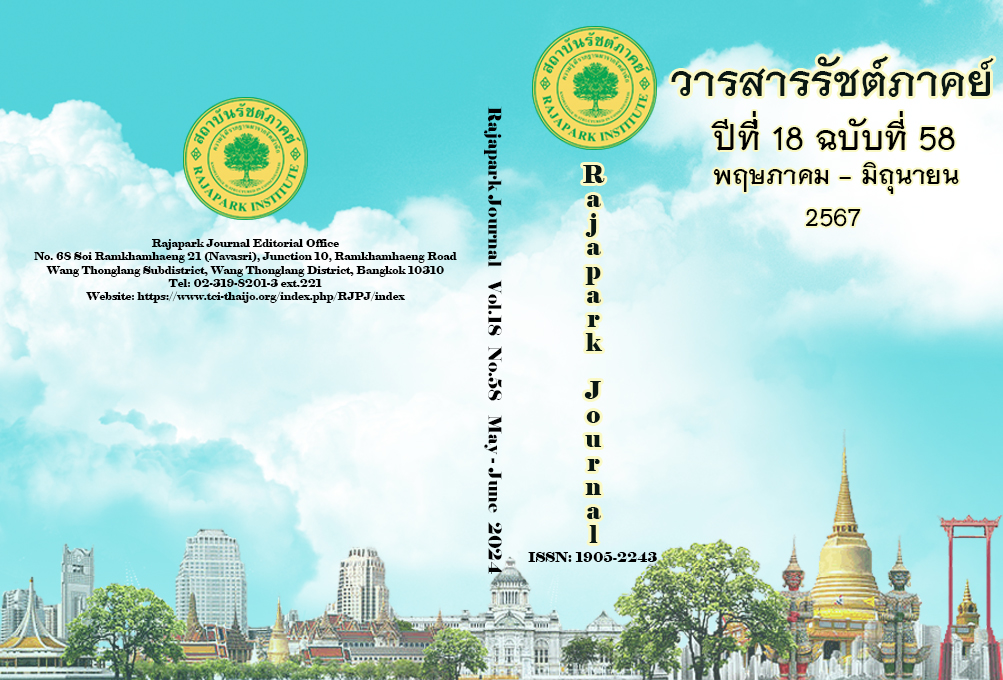A Study of Culture-Specific Items (CSIs) and Translation Strategies in The Blind Earthworm in the Labyrinth
Main Article Content
Abstract
This research aims to investigate culture-specific items (CSIs) within the novel The Blind Earthworm in the Labyrinth and to analyze the translation strategies implemented by the translator when dealing with these culturally specific items. Employing a qualitative methodology, this study primarily emphasizes content analysis. The texts under study are the 2015 South East Asian Writers (“S.E.A. Write”) Award-winning Thai novel, The Blind Earthworm in the Labyrinth by Veeraporn Nitiprapha, alongside its English translation by Kong Rithdee in 2018. The research framework draws upon Nida’s (1964) cultural categories and Newmark’s (1988) translation strategies, providing a theoretical lens to examine the translator’s approaches to managing the non-equivalence between English and Thai. Findings revealed that the highest frequency among culture-specific items is attributed to material culture, followed by ecological, social, linguistic, and religious cultures, respectively. Among the 18 identified translation strategies, the most frequently employed was a literal translation, followed by couplets, transference, functional equivalent, cultural equivalent, compensation, paraphrase, reduction, shifts or transpositions, recognized translation, through-translation, descriptive equivalent, modulation, componential analysis, and a more specific word. Notably, synonyms, translation labels, and less expressive words were the least utilized. The findings suggest that these diverse strategies effectively address cultural disparities between Thai and English, providing valuable insights for Thai translators and Thai teachers in the field of translation. Recommendations for further research are also provided.
Article Details

This work is licensed under a Creative Commons Attribution-NonCommercial-NoDerivatives 4.0 International License.
Views and opinions appearing in the Journal it is the responsibility of the author of the article, and does not constitute the view and responsibility of the editorial team.
References
Amininanadji, O. (2016). A study of culture specific items and translation strategies in Bahrmm Beyzai’s play “Marionettes”[Master’s thesis, Université de Montréal]. https://shorturl.asia/CfvIu
Aotarayakul, S. (2014). The study of cross-cultural translation from Thai to English in Thai movies’ subtitles[Unpublished Master’s thesis, Mahidol University].
Baker, M. (2011). In other words: A coursebook in translation. Routledge.
Brasiene, B. (2013). Literary translation of culture-specific items in Lithuanian translation of Orwell’s Down and Out in Paris and London[Master’s thesis, Vytautas Magnus University]. https://vb.vdu.lt/object/elaba:2105440
Catford, J. C. (1965). A linguistic theory of translation. Longman.
Chaleegul, W. (2017). Strategies for translating cultural words from Thai to English: A case study of The Story of Jan Dara by Utsana Phleungtham[Dependent study, Thammasat University]. https://shorturl.asia/F7Cc3
Fedora, L. (2015). An analysis of procedures in translating cultural words and their meaning shift found in the Indonesian novel Laskar Pelangi. Journal of Language and Literature, 4(1), 1-8. http://jurnalvivid.fib.unand.ac.id/index.php/vivid/article/view/27
Krai-on, S. (2013). Strategies for translating Thai cultural words into English in the novel Four Regions[Dependent study, Silpakorn University]. https://shorturl.asia/Wg8ud
Larson, M. L. (1984). Meaning-based translation: A guide to cross language equivalence. University Press of America.
Merriam-Webster. (2023). Merriam-Webster.com dictionary. https://www.merriam-webster.com
Newmark, P. (1981). Approaches to translation. Pergamon Press.
Newmark, P. (1988). A textbook of translation. Prentice Hall.
Ngamsri, A. (2017). Strategies used in translating cultural terms found in the English version of the Thai novel “The Teachers of Mad Dog Swamp”[Dependent study, Thammasat University]. https://digital.library.tu.ac.th/tu_dc/frontend/Info/item/dc:142779
Nida, E. A. (1964). Towards a science of translation, with special reference to principles and Procedures involved in Bible translating. Brill.
Nida, E. A., & Taber, C. R. (1982). The theory and practice of translation. Brill.
Nitiprapha, V. (2015). The Blind Earthworm in the Labyrinth (4th ed.). Matichon.
Nitiprapha, V. (2018). The Blind Earthworm in the Labyrinth (K. Rithdee, Trans.). River Books. (Original work published 2013).
Nord, C. (1991). Text analysis in translation: Theory, methodology and didactic applications of a model of translation-oriented text analysis. Rodopi.
Oxford University Press. (2023). Oxford advanced learner’s dictionary. https://www.oxfordlearnersdictionaries.com/definition/english/
Pym, A. (2018). A typology of translation solutions. The Journal of Specialised Translation, (30), 41-65. https://www.academia.edu/79774477/A_typology_of_translation_solutions
Royal Institute. (2013). Dictionary of the Royal Institute of Thailand 2011 (2nd ed.). Royal Academy.
The Oxford Encyclopedia of American Cultural and Intellectual History. (2013). Oxford reference. Oxford University Press. https://shorturl.asia/1wnox
Venuti, L. (1995). The translator’s invisibility: A history of translation. Routledge.
Wongseree, T. (2021). Translation of Thai culture-specific words into English in digital environment: Translators’ strategies and use of technology. rEFLections, 28(3), 334-356. https://so05.tci-thaijo.org/index.php/reflections/article/view/254613


